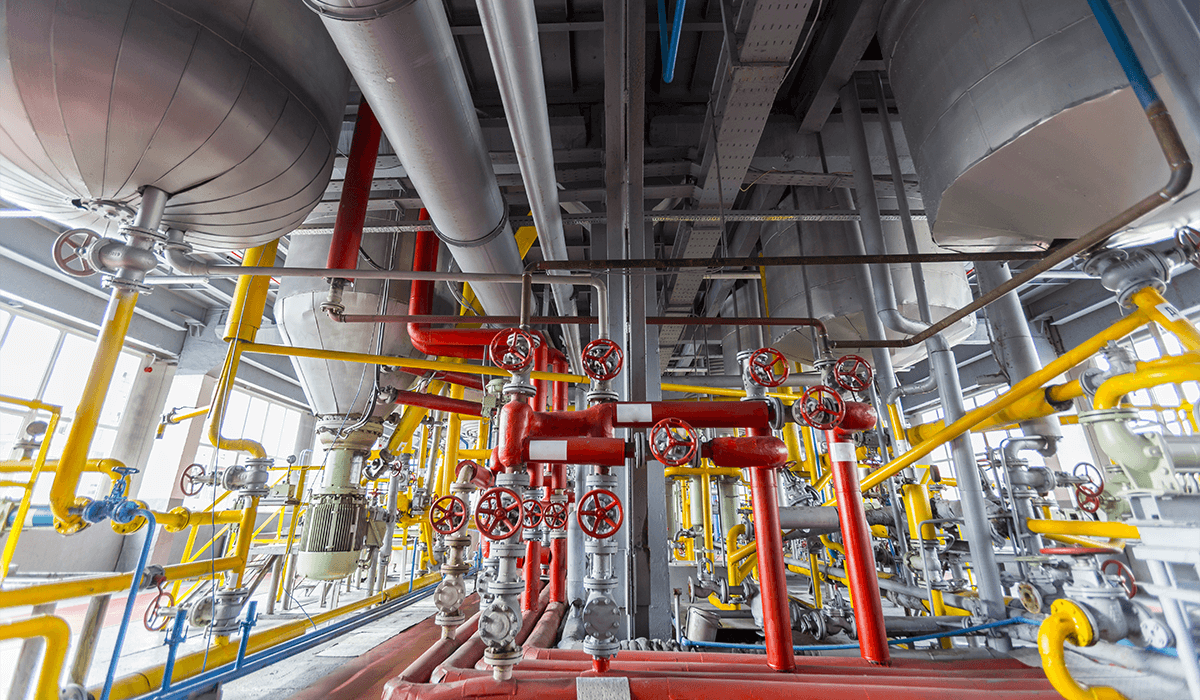
Properly insulating the systems in your building — from piping to heating or cooling systems — is essential to keep the proverbial wheels spinning so you stay productive. Mechanical insulation systems are no exception, improving efficiency and cost savings.
Read on to learn the basics of mechanical insulation. Our beginner’s course is in session!
What Is Mechanical Insulation?
As the name suggests, mechanical insulation is insulation and jacketing for mechanical systems. It is applied to a mechanical system for a few reasons:
- To reduce heat transfer
- To reduce sound propagation in the surrounding environment
- Workplace safety
- Reduced emissions for better air quality
In performing these functions, mechanical insulation enhances your system and your overall operations.
What Are the Benefits of Mechanical Insulation?
When you install mechanical insulation, the perks add up, saving you time, money and headaches. As pros in the field, we see several primary benefits for you and your team alike, such as:
Lower Energy Demand and Costs
Want to increase your energy savings and improve your overall equipment and system performance? Mechanical insulation is the way in both hot and cold applications.
- In heating systems, mechanical insulation works to reduce greenhouse gas emissions by allowing more efficient system operations.
- In cooling systems, mechanical insulation reduces moisture and mold growth, all while increasing equipment efficiency in below-ambient conditions.
With these efficiencies in place, you save both energy and money.
Reduced Noise
Mechanical systems move so much, which not only creates a lot of work but plenty of noise as well. Apply mechanical insulation for an immediate impact. It works to reduce noise, starting at the rate at which sound waves leave the system.
By leaning on these products to perform acoustic insulation functions, you enhance both worker safety and avoid vibrations that may cause system disruption.
Condensation Prevention
Picture an ice-cold glass of water glistening with moisture on a hot day. It happens because that water is colder than the environment. That’s condensation, and it also happens in mechanical systems.
When mechanical systems operate at temperatures colder than their surrounding environment — such as with cold piping — they start to condense. Luckily, thick insulation works to move the dew point away from the surface of the pipe, protecting it from water vapor ingress.
Safety and Personnel Protection
Mechanical systems can create extremely hot or cold surface temperatures, presenting hazards to workers in the surrounding area. The plus side is that mechanical insulation can mitigate personal injury risks, providing protection to individuals working around these systems. It does so by leveling surface temperature so components are safe to touch.
How Can I Choose the Right Mechanical Insulation?
Mechanical insulation works hard to protect your team, enhance efficiency and maximize your ROI, but there’s more than one option available to you. How do you select the best? Keep a few things in mind to choose the best mechanical insulation.
1. Adhere to Energy Codes
Regulations matter. If the community your building is in has a specific energy code, your mechanical insulation must comply with it. Don’t know the appropriate code or no energy codes are outlined? Refer to ASHRAE 90.1 2007 as a baseline. ASHRAE 90.1 2007 is the guidepost for most building energy codes today.
2. Avoid Value Engineering
You never want to cut corners on the structures and systems inside your building — even if that means saving a little green. Value engineering is a common practice of using less insulation to get building costs below their original quotes during the design phase.
Value engineering can backfire, causing more problems down the line. With the reduction in mechanical insulation, your operation suffers, because:
- The building’s operating costs gradually increase.
- Equipment has to work harder, decreasing its operational life.
The common adage of investment and reward is true: You get what you pay for, so don’t skimp on mechanical insulation.
3. Consider the System to be Insulated
Insulation materials might look the same, but that is rarely true. More often than not, unique forms of mechanical insulation perform very differently.
The characteristics of various mechanical insulation types — thickness, material differences and more — make them ideal for specific applications, so the system you wish to insulate will dictate the best options.
Take care to install the proper insulation material on each mechanical service. Some of the most common materials include fiberglass, mineral wool, Foamglas, calcium silicate and perlite, which can be either cellular or fibrous.
Make the Right Choice for Your Mechanical Insulation
Using the right mechanical insulation can set your operation up for success, preventing safety and efficiency issues down the road. Factor in the benefits each solution can bring, as well as application-specific guidelines to choose the right solution for your needs and get the most out of your mechanical insulation.
Want to learn more? Explore the Distribution International blog for pro insights, and turn to us to learn all you need to know about mechanical insulation.

